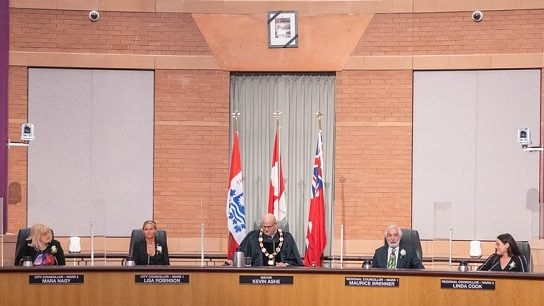As part of their financial plan, municipalities set the capital and operating budgets each year by taking into consideration their government-mandated responsibilities, maintaining service level standards and their community’s priorities.
These documents are the blueprint that outline the where money will be collected and spent in line with the municipality’s priorities and level of service according to their vision and mission statements, values and long-term strategic plan.
What is the operating budget?
The Operating Budget covers the ongoing, day-to-day expenses that the municipality incurs to provide programs and services to residents including items such as staff salaries (planning, departments, pensions), emergency services (police, fire and EMS) and water, social services and parks and recreation that are funded primarily by property taxes ($110 million), water and sewage fees.
Compared to personal budgeting, this is the equivalent to buying groceries, electricity, and insurance premiums.
Unlike the federal and provincial governments, municipalities are unable to levy income or sales taxes.
Operating budgets are prepared at the start of each financial year. Most cities in Ontario are on a calendar year.
More: Municipal operating budgets in Ontario
What is the capital budget?
The Capital Budget plans for the acquisition and replacement of Tangible Capital Assets, which are defined as significant expenditures to provide municipal services with a benefit beyond one year. The capital budget excludes the costs of operating these services, which form part of the operating budget.
Compared to personal budgeting, this is the equivalent to buying a new car, furniture, or building an addition on the house.
It covers long-term investments in the purchase, construction, maintenance and repair of physical facilities and infrastructure such as road repairs, bridges, libraries and parks that are funded by water and wastewater fees, property taxes, government grants and long-term debt and are paid off over time.
In Ontario, municipalities can incur long-term debt to fund capital projects (ie. run a deficit), however they may not commit more than 25% of total own-source revenue to service long-term debt and other long-term obligations.
You can see individual approved projects in the 2023 Capital Budget Summary:
Capital budgets are prepared at the start of each financial year. Most cities in Ontario are on a calendar year.
Many municipalities report their capital budgets on a cash basis.
More: Municipal capital budgets in Ontario
What are financial statements?
Annual financial statements
A municipality shall, for each fiscal year, prepare annual financial statements for the municipality in accordance with generally accepted accounting principles for local governments as recommended, from time to time, by the Public Sector Accounting Board of the Chartered Professional Accountants of Canada.
Section 294.1 of the Municipal Act
Financial statements are end-of-year reports that look back on the outcome of a municipality’s financial activities and balances during the previous financial year. They provide a measure of a government’s performance in the achievement of its objectives as set out in the operating and capital budgets.
They are prepared on an accrual basis, meaning revenues and expenses are shown when a decision/purchase agreement is made, which isn’t necessarily when money changes hands.
They are prepared in accordance with generally accepted accounting principles (GAAP) as recommended by the CPA Canada – Public Sector Accounting Board (PSAB) and must be audited by a professional accountant.
Statements must include:
- Statement of financial position (“balance sheet”) – long-term view of the municipality’s financial health
- Statement of operations (“income statement”)
- Statement of change in net debt
- Statement of cash flow
- Comparative figures from the prior year
- Comparison of actual to budget results
Showing
- Assets and liabilities
- Net financial resources (called net debt)
- Accumulated surplus or deficit
- Tangible capital assets
- Other non-financial assets
While budgets come out at the start of the fiscal year, financial statements come out at the end as an “aftermath” report.
More: Municipal financial statements in Ontario
What is the Financial Information Return (FIR)?
Annual return
The treasurer of a municipality shall in each year provide the Minister with a return containing information designated by the Minister with respect to the financial affairs of the municipality, at the times and in the manner and form designated by the Minister. 2001, c. 25, s. 294 (1).
Section 294 (1) of the Municipal Act
The Financial Information Return is a standardized form that municipalities must enter their financial standing and activities into and submit to the Ministry of Municipal Affairs and Housing every year.
Download FIR reports by year and municipality here

More: Municipal Financial Information Return in Ontario



Comments
We want to hear from you! Share your opinions below and remember to keep it respectful. Please read our Community Guidelines before participating.